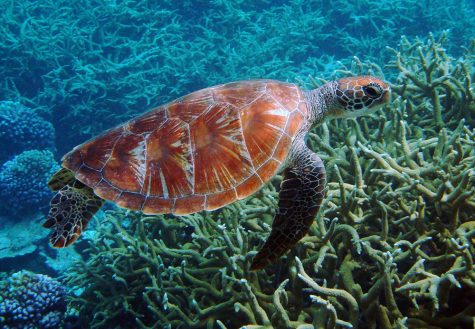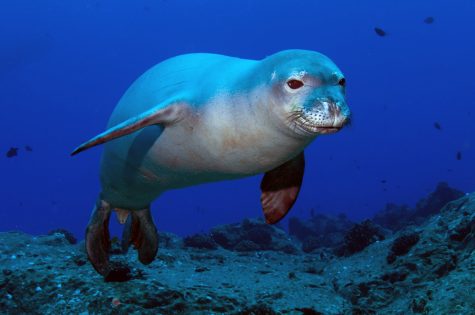
If you see someone trip over something, or even nothing, it’s probably me.
Courtesy of National Oceanic and Atmospheric Administration
This is a map of the area that the Papahānaumokuākea Marine National Monument covers.
September 26, 2016
Growing up on the Southern California coast, living a carefree life filled with wonderment and awe of the ocean, it is easy to take it for granted. For many of us, the ocean is an integral part of our childhood and is an inseparable facet of our life. It is something we associate with home, but whose welfare we think of as being out of our control. However, our National Parks do work to protect some of our most treasured natural landscapes.

In the state of Hawaii, the Papahānaumokuākea Marine National Monument was established in 2006. On Aug. 25, President Barack Obama expanded the natural reserve in celebration of the 100 anniversary of the US National Parks. Papahānaumokuākea is now the largest protected area on earth. The national monument spans 583,000 square miles, more than quadrupling the 140,000 square miles it covered upon establishment. It is roughly twice the size of Texas and is larger than all US National Parks combined.
This expansion is essential as we’re moving into an already controversial political season. Presidential candidate Donald Trump, who lacks regard for scientific knowledge and the welfare of the natural world, has threatened to get rid of the “Department of Environmental,” as he “re-named” it. It is critical that we do everything in our capacity to ensure natural habitats like Papahānaumokuākea are protected while we can.
Papahānaumokuākea is a “no-take” zone that prohibits commercial fishing, mineral extractions and other forms of environmental exploitation. This increase of “no take” regions is vital to the maintenance of its dense biodiversity, especially in the coral reefs. Papahānaumokuākea’s currently pristine reefs need to be protected from environmental abuses such as the water’s growing acidity and coral bleaching, which occurs when increased water temperatures devastate populations of oxygen-producing algae. Marine biologist and National Geographic explorer Sylvia Earle insists that “Resilience to climate change is dependent upon having significant areas of natural protection–for biodiversity and for all the things that hold the planet steady. This is vitally important to protect our life-support system.”
Furthermore, according to The White House Fact Sheet, this habitat is home to over 7,000 marine species, 25 percent of which are native. It is a crucial sanctuary for marine life that is home to blue whales, giant sea turtles and endangered Hawaiian monk seals (tragically only around 1,000 remain). We often fail to realize that if one species, like the Hawaiian monk seal, reaches extinction, the food web would experience a domino effect. This would be detrimental to Papahānaumokuākea’s intricate ecosystems.

Obama’s expansion of Papahānaumokuākea adds a new chapter to this constantly evolving habitat. Hawaii was home to Obama during his childhood. In an essay he wrote for the Punahou Bulletin, Obama explains how “The opportunity that Hawaii offered–to experience a variety of cultures in a climate of mutual respect–became an integral part of my world view, and a basis for the values that I hold most dear.” Now, at the end of his presidency, this expansion seems like a tribute to his home and a reminder to us about the importance of protecting marine habitats.
Living along the coast, we need to be aware of and take responsibility for the repercussions of our (in)actions. Such complacence can perhaps be attributed to a common attitude of entitlement and a belief that humans are superior to other life forms, hence why our beaches get trashed with garbage and our tide pools get stomped on recklessly. We should remember that even though the ocean may seem universes apart from our realm of familiarity, it is ultimately so close to home. The ocean, for all it gives, deserves to be treated with nothing but steadfast care and gratitude.

If you see someone trip over something, or even nothing, it’s probably me.